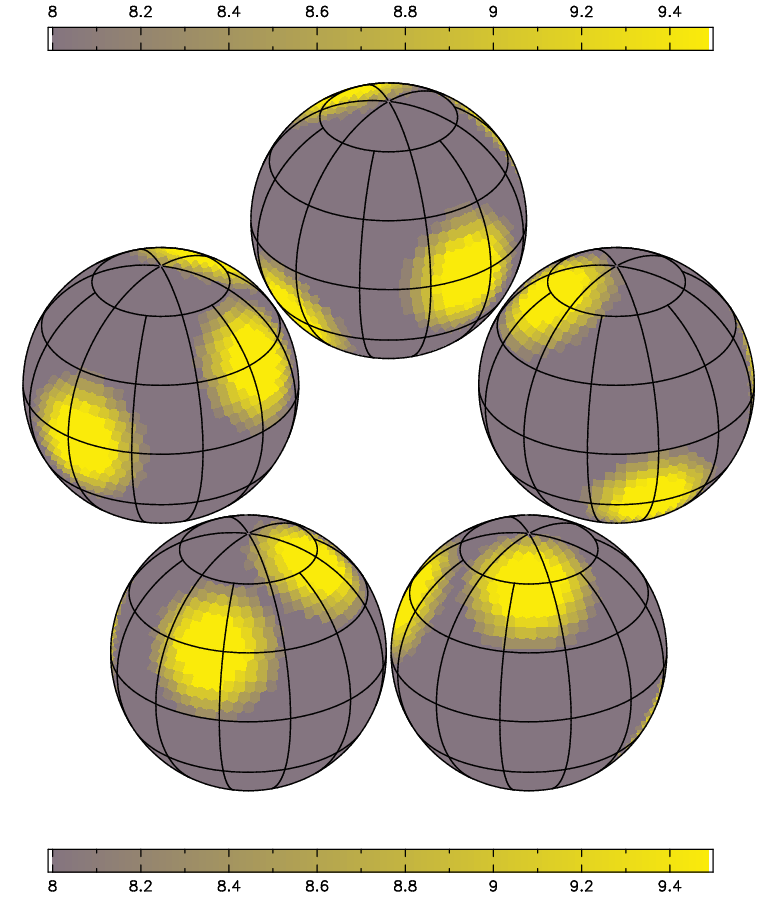
Has Oleg Kochukhov achieved spatial
super-resolution with Invers10 ??

In a recent paper, Oleg Kochukhov has presented
numerical tests relating to "Doppler imaging of chemical spots on
magnetic Ap/Bp stars".
https://arxiv.org/abs/1611.05473
The referee, carefully chosen by Astronomy and Astrophysics,
expressed, among others, her/his appreciation of the introduction
which "sets this work properly into context
and provide the reader with all necessary information."
She/he has also been particularly pleased by the fact that "the numerical experiments and simulation as
well as the results are clearly described and presented"
(citations courtesy Oleg Kochukhov).
Is it possible that the referee has overlooked at least one
description that appears to be incompatible with virtually all the
plots in this article? Could it be the case that the reader is not
provided with the necessary information?
It says at the end of section 3.1: "Chemical
abundance maps were recovered using a 1876-element surface grid
with variable number of zones in 38 latitude belts" (see Fig. 5
in Piskunov & Kochukhov (2002) for an example of such a
surface grid)." Figs. 3 to 11 however show something
completely different!! There is no sign of this low-resolution
grid in the uncannily smooth recovered maps. The 4 spots adopted
by O.K. would look like that on a 2034-element grid.


Has Oleg Kochukhov achieved spatial
super-resolution with his Invers10 code?
Of course not, but nothing is said in
the article about the smoothing algorithm(s)
applied to the 1876-element results although IDL surely offers a
plethora of possibilities. Shouldn't the reader be entitled to
know the errors in the sense recovered minus original before smoothing as
compared to after smoothing ?
If smoothing is an essential ingredient to the numerical tests,
one begins to understand the importance of adopting spots with an
"umbra", surrounded by a "penumbra" (quote O.K.: "The element abundance was linearly interpolated
between rin and rout, resulting in smooth
spot edges"). With sharp edges as in the tests presented
in 2002, smoothing would hardly be of help but rather finish in
embarrassment. There is an additional "advantage" to the new,
structured spots: from Fig.5 of Kochukhov & Piskunov (2002) it
is obvious that monolithic spots are very extended in the sense
that dozens of degrees away from the original position you still
find non-negligible over-abundances as discussed by Stift &
Leone (2017). Virtually nothing of this kind can occur in the
new scenario thanks to the smooth edges of the original spots and
thanks to smoothing of the recovered map.
Does the whole exercise make the abundance maps of HD50773 and HD3980 more credible?
 Back to the Ada in Astrophysics Homepage
Back to the Ada in Astrophysics Homepage
![]()


 Back to the Ada in Astrophysics Homepage
Back to the Ada in Astrophysics Homepage